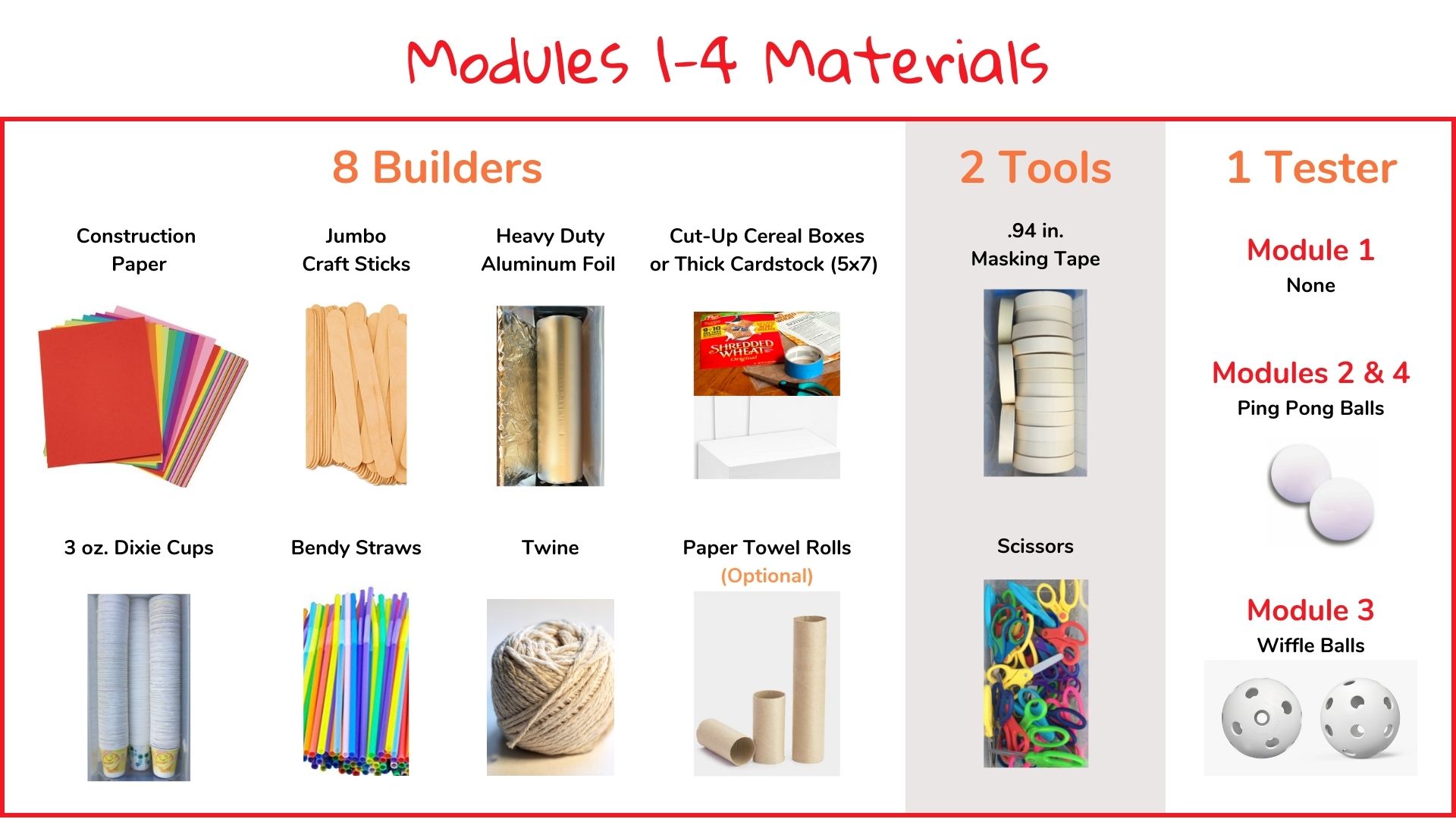STEM Challenge: Ramp It Up!

Context for Challenge
Students are transported back to the 1880s to assist Lamarcus Thompson, the inventor of the roller coaster, in overcoming technological limitations to bring his concept to life. Students explore the potential of simple machines and must build inclined planes to create movement and acceleration using only gravity.
Constraints and Success Criteria
The system must start behind a designated line and hit targets at varying distances without any manual push, flick, or additional force besides gravity. The design must effectively utilize inclined planes to control the direction and acceleration of the ball.
Success is measured by the ability of the designed system to direct the ball towards and successfully hit the designated targets in order, demonstrating how inclined planes can be used to create a thrilling motion similar to a roller coaster without advanced technology.
Materials

You need ping pong ball as testers for this challenge.
Set Up
- Prepare Materials: Ensure you have all the necessary materials ready beforehand and organize them so that they are easily accessible to students. Students should use no more than five of any one material per creation! For example, a student can use five straws and five pieces of paper, but not ten straws. If you provide aluminum foil, no more than one arm’s length piece for each student!
- Provide Guidelines and Constraints: Reiterate the challenge to students, as needed. Building time is 45 minutes!
- Model the Design Process: Before students begin, demonstrate the design process by going through the steps yourself. Discuss how to brainstorm ideas, create prototypes, test them, and make iterations based on the results, as needed.
- Encourage Collaboration: Foster a collaborative environment where students can work together in pairs. Encourage them to share ideas, help each other troubleshoot challenges, and provide constructive feedback throughout the process. But no groups of three!
- Support Adaptation: Encourage students to embrace the mindset of adaptation and problem-solving. Help them see that setbacks and failures are opportunities to learn and make improvements. Guide them in identifying areas for adaptation and brainstorming alternative solutions.
- Facilitate Reflection: Set aside time for students to reflect on their design process and decision-making. Ask questions that prompt them to think critically about their choices, challenges they faced, and what they learned from the experience. This reflection can be done individually, in pairs, or as a whole-class discussion.
- Celebrate and Showcase: Celebrate students’ efforts and showcase their work.
CASEL Discussion Questions
Five questions aligned to Social Awareness and Relationship Skills — our focus CASEL competency for Module 4 and Module 5 — for teachers to foster an engaging discussion and social-emotional learning
- How do you think Lamarcus Thompson felt when he believed his idea wasn’t possible? Have you ever felt this way about an idea you had?
- Why is it important to respect Lamarcus Thompson’s dream even if it seems impossible at first? How can we show respect to others’ ideas and dreams?
- How would you explain the concept of inclined planes to Lamarcus in a way he would understand, considering he’s from the 1880s?
- How did you work together with your classmates to improve your designs? What roles will each of you play in this collaboration?
- If your group was struggling with a part of the challenge, who could you have asked for help, and how could you have asked?



